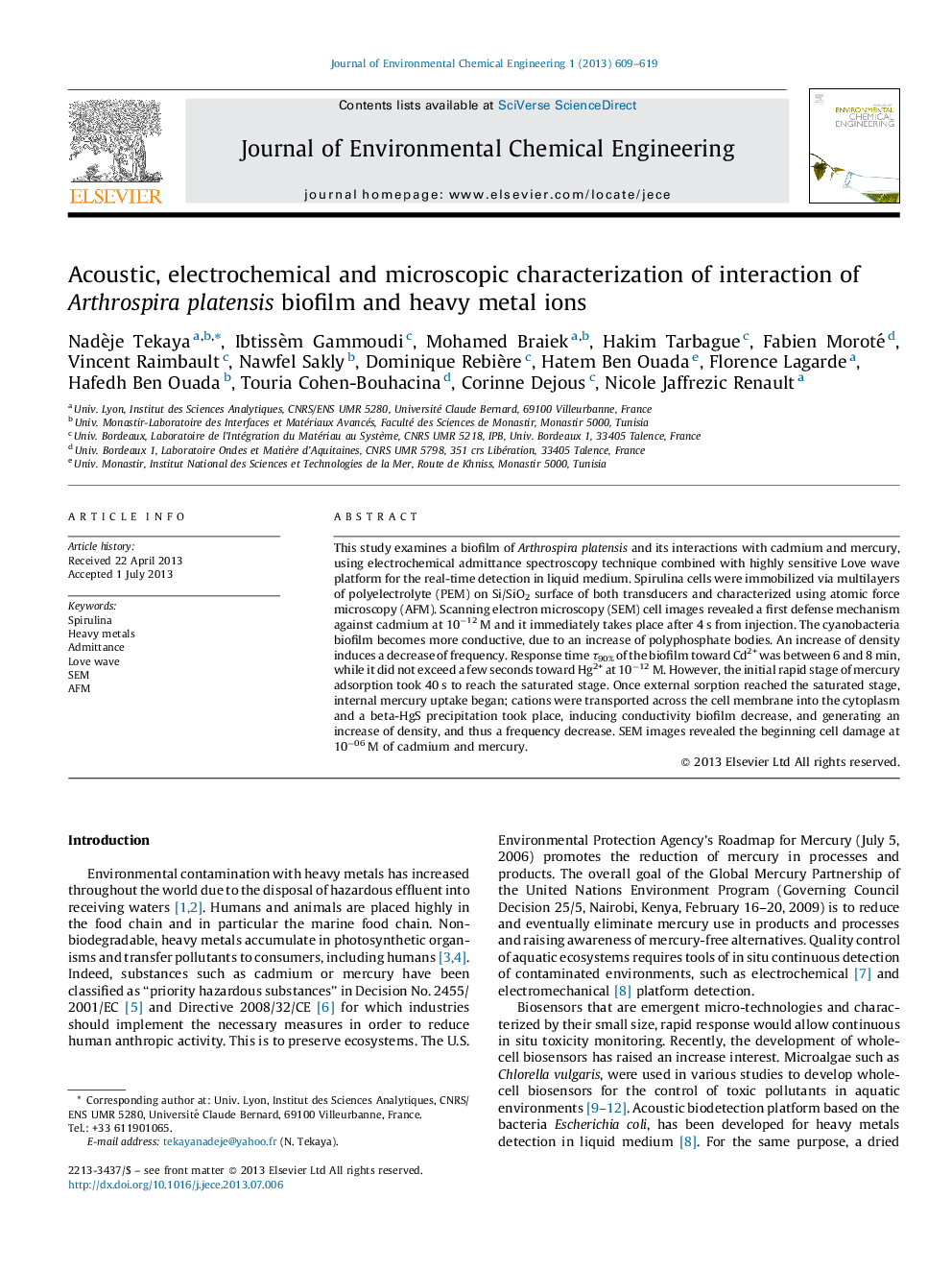| Article ID | Journal | Published Year | Pages | File Type |
|---|---|---|---|---|
| 222263 | Journal of Environmental Chemical Engineering | 2013 | 11 Pages |
This study examines a biofilm of Arthrospira platensis and its interactions with cadmium and mercury, using electrochemical admittance spectroscopy technique combined with highly sensitive Love wave platform for the real-time detection in liquid medium. Spirulina cells were immobilized via multilayers of polyelectrolyte (PEM) on Si/SiO2 surface of both transducers and characterized using atomic force microscopy (AFM). Scanning electron microscopy (SEM) cell images revealed a first defense mechanism against cadmium at 10−12 M and it immediately takes place after 4 s from injection. The cyanobacteria biofilm becomes more conductive, due to an increase of polyphosphate bodies. An increase of density induces a decrease of frequency. Response time τ90% of the biofilm toward Cd2+ was between 6 and 8 min, while it did not exceed a few seconds toward Hg2+ at 10−12 M. However, the initial rapid stage of mercury adsorption took 40 s to reach the saturated stage. Once external sorption reached the saturated stage, internal mercury uptake began; cations were transported across the cell membrane into the cytoplasm and a beta-HgS precipitation took place, inducing conductivity biofilm decrease, and generating an increase of density, and thus a frequency decrease. SEM images revealed the beginning cell damage at 10−06 M of cadmium and mercury.
